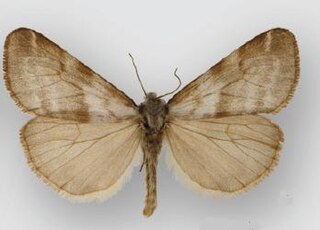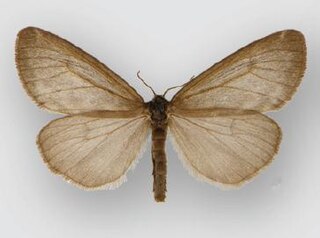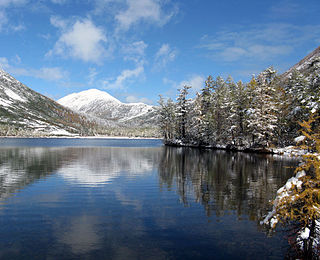
The Siberian tiger is a tiger from a specific population of the Panthera tigris tigris subspecies native to the Russian Far East, Northeast China, and possibly North Korea. It once ranged throughout the Korean Peninsula, north China, and eastern Mongolia. The population currently inhabits mainly the Sikhote-Alin mountain region in southwest Primorye Province in the Russian Far East. In 2005, there were 331–393 adult and subadult Siberian tigers in this region, with a breeding adult population of about 250 individuals. The population had been stable for more than a decade because of intensive conservation efforts, but partial surveys conducted after 2005 indicate that the Russian tiger population was declining. An initial census held in 2015 indicated that the Siberian tiger population had increased to 480–540 individuals in the Russian Far East, including 100 cubs. This was followed up by a more detailed census which revealed there was a total population of 562 wild Siberian tigers in Russia. As of 2014, about 35 individuals were estimated to range in the international border area between Russia and China.

An iron meteorite fell on the Sikhote-Alin Mountains, in southeastern Russia, in 1947. Large iron meteorite falls have been witnessed and fragments recovered but never before, in recorded history, a fall of this magnitude. An estimated 23 tonnes of fragments survived the fiery passage through the atmosphere and reached the Earth.

The Sikhote-Alin is a mountain range in Primorsky and Khabarovsk Krais, Russia, extending about 900 kilometres (560 mi) to the northeast of the Russian Pacific seaport of Vladivostok. The highest summits are Tordoki Yani at 2,077 metres (6,814 ft) above sea level, Ko Mountain (2,003 m) in Khabarovsk Krai and Anik Mountain (1,933 m) in Primorsky Krai.

Dodia is a genus of woolly bear moths in the family Erebidae. The genus was erected by Harrison Gray Dyar Jr. in 1901. The moths are found in subarctic tundra and taiga ecosystems. They belong to the subtribe Callimorphina of tribe Arctiini.

Achlya flavicornis, the yellow horned, is a moth of the family Drepanidae. The species was first described by Carl Linnaeus in his 1758 10th edition of Systema Naturae. It is found from Europe to the eastern Palearctic ecozone.

Sikhote-Alin Nature Reserve is a biosphere reserve in Primorsky Krai. It is an important reserve for the endangered Siberian tiger.

Dodia albertae is a moth of the family Erebidae first described by Harrison Gray Dyar Jr. in 1901. It is found in Canada, Siberia south to Mongolia, west to the Polar Urals. See the subspecies section for more information.
Samuel Timothy Johnston is a Canadian former politician in the territory of Yukon, Canada. He served as chief of the Teslin Tlingit Council from 1970 to 1984, and represented Campbell in the Yukon Legislative Assembly from 1985 to 1992 as a NDP member.
Dodia diaphana is a moth of the family Erebidae. It was described by Eduard Friedrich Eversmann in 1848. It is found in Russia and Mongolia.
Dodia verticalis is a moth of the family Erebidae. It was described by J. Donald Lafontaine and James T. Troubridge in 2000. It is found in Canada (Yukon). The habitat consists of dry, rocky tundra.
Dodia transbaikalensis is a moth of the family Erebidae. It was described by Yuri A. Tshistjakov in 1988. It is found in Siberia and Transbaikalia in Russia.

Anyuysky National Park, covers the basin of the Anyuy River, on the west slope of the Central Sikhote-Alin Mountain range in the Russian Far East. The Anyuy flows west into the Amur River, the main river of the region, as it flows northeast into the Sea of Okhotsk. The park is important because it creates an ecological corridor from the low floodplain of the Amur, to the high forested mountains of the Sikhote-Alin. The park is in the Nanaysky District in Khabarovsk Krai, about 50 miles downstream of the city of Khabarovsk. The area is remote, with few towns and sparse population. The area has historically depended on salmon fishing, logging, and hunting. The local indigenous people are the Nanai people, representing about a quarter of the nearby settlements.

Udegeyskaya Legenda National Park covers the richest coniferous-deciduous forest on the western slope of the Central Sikhote-Alin mountains of the Russian Far East. The Sikhote-Alin is a range that runs north-south through Primorsky Krai. The park is designed to protect west-slope river valley habitat, and to support the remnant of the indigenous Udege people. The area is known for abundant fishing and boating on the streams and rivers. It is also a refuge for the endangered Amur tiger. The park is roughly midway between the city of Vladivostok, and Khabarovsk. The relatively warm waters of the Sea of Japan are to the east, the Korean peninsula to the south, and China to the West.

Bikin National Park was created on November 3, 2015 to protect the largest remaining old-growth mixed forest in the Northern Hemisphere, as well as the territory of 10% of all Amur tigers in the wild. The park was also created for the purpose of protecting the forest culture of the 600 indigenous inhabitants of the Bikin River Basin living in the territory - Udeghes and Nanai people. Because of its size for pristine forest, and its characterization as a "temperate rain forest", it has an important status as a center for biodiversity of both plants and animals. The park sits in the administrative region of Pozharsky District, in Primorsky Krai in the Russian Far East on the west slope of the Sikhote-Alin mountains. The Bikin River Valley is also a World Heritage site.

Bastak Nature Reserve is a Russian 'zapovednik' located in the Amur River basin in the Russian Far East. The reserve's territory covers the south-eastern spurs Bureya Massif and the northern outskirts of the Sredneamurskaya lowlands. The reserve is situated in about 10 km north of the city of Birobidzhan in the Birobidzhansky District, and is the only national reserve in the Jewish Autonomous Oblast.

Bolon Nature Reserve is the oldest Russian 'zapovednik' in the Russian Far East. It is located on the Middle Amur River lowlands adjacent to the south-west of Lake Bolon. The reserve covers the wetlands of international importance. Large numbers of migratory waterfowl use the area for nesting and stopovers on long flights. The reserve is situated half way between the city of Khabarovsk and Komsomolsk-on-Amur, in the Amursky District of Khabarovsk Krai. The reserve was created in 1997, and covers an area of 100,000 ha (390 sq mi).

Botcha Nature Reserve is a Russian 'zapovednik'. It is the northernmost reserve inhabited by the endangered Amur Tiger. The reserve is located in the north-eastern part of the Sikhote-Alin mountain range; it includes the Botchi River basin on its eastern slopes. The reserve is about 120 km south of the port city of Sovetskaya Gavan in the Sovetsko-Gavansky District of Khabarovsk Krai. The reserve was created in 1994, and covers an area of 267,380 ha (1,032.4 sq mi).

Ussurisky Nature Reserve is a Russian 'zapovednik' that protects one of the remaining virgin mixed deciduous-conifer forests in the Primorsky (Maritime) region of the Russian Far East. The mountainous terrain is located on a southern spur of the Sikhote-Alin Mountains, in the upper reaches of the Komarovka River, about 50 km northeast of the city of Vladivostok. The reserve is named after Vladimir L. Komarov, an important early botanist and early explorer of the Primorsky region. The Ussursisky Reserve is situated in the Shkotovsky District of Primorsky Krai.

The Okhotsk-Manchurian taiga ecoregion is an area of coniferous forests in the Russian Far East, covering the Amur River delta, the west coast of the Okhotsk Sea, and the rugged extension of the northern Sikhote-Alin Mountains that run southwest-to-northeast through the Primorsky and Khabarovsk regions. It is the southernmost taiga forest in Eurasia. The ecoregion is distinguished from surrounding ecoregions by the slightly warmer climate due to the maritime influence and the shield of the mountains to the west, and by the mixing of flora and fauna species from Okhotsk-Kamchatka communities to the north and Manchurian species from the south. The forest at lower altitudes is "light taiga", and "dark taiga" at higher altitudes.














